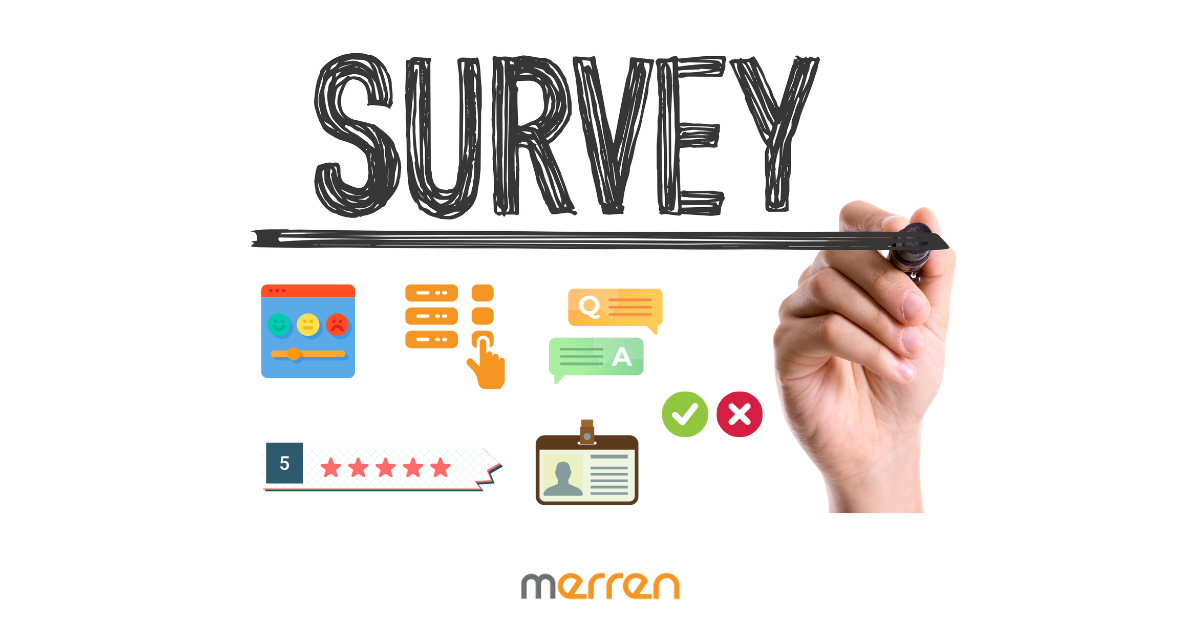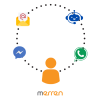Survey questions are a primary way of gathering information and insights from your target audience. If one has to improve processes in customer service, conducting feedback can give you multiple insights. In this blog, we will take a comprehensive look at different survey questions, why they matter, and how they can help you make informed decisions. We will also share the best practices of creating survey designs.
Introduction to Survey Questions- Why Does It Matter ?
Businesses rely on surveys as a means of gathering information on customer behavior, preferences, and opinions. A good survey question is the best way to bring real time data from consumers. Using these insights, organizations can optimize their offerings and make informed business decisions. Designing effective survey questions requires careful consideration to ensure that the results accurately reflect the target audience’s thoughts and feelings. Not doing so may result in incomplete or inaccurate data. Even when it comes to offering in-depth interviews, the format of questions will equally matter in that scenario. The main crux is to grasp information and not confuse the respondents. Marketers can experiment with different types of survey questions according to their goals of market research.
Types of Survey Questions
There are many ways to craft survey questionnaires. The type of question you use also depends on the medium of distribution, the main goal of capturing customer thoughts, and how you will use the combined data. Here are the types of questions marketers most frequently use.
Open-Ended Survey Questions
Open-ended survey questions give respondents the chance to respond in their own words. This allows for the collection of qualitative data such as new ideas and perspectives. Analyzing open question responses may be time-consuming but very detailed. So it is important to balance the use of open-ended questions with closed-ended questions for quantitative data.
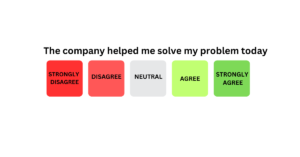
Close-Ended Survey Questions
Close-ended questions are quantitative in feature. It provides predefined answer options for respondents to choose from. Such quantitative data is easy to categorize and analyze with these types of survey question examples like multiple-choice question and Likert scale question. However, while creating closed-ended survey questions, ensure that answer choices are comprehensive and unbiased. Commonly used metrics are NPS, CSAT score , CES scores that fall in this category.
Multiple-Choice format
Multiple choice questions (MCQs) can be an effective way to get various responses for the same question. It can so happen that a particular product can be of multiple use. To capture different response types for a same product range, MCQs can do the justice. MCQ offers a pre-defined set of answer options which help in categorizing and analyzing the data quantitatively.
Dichotomous Questions
Dichotomous survey questions are a popular type of survey question that requires respondents to choose between only two answer options. This question type is ideal for collecting clear-cut data that can be analyzed quickly and easily. Dichotomous questions offer only two possible answers- yes/no, agree or disagree etc. It is very closed-ended in features.
Demographic Questions
Gathering information about the respondent’s personal characteristics is necessary to understand your target audience. Demographic survey questions can help marketers segment based on specific demographics. With this data, they can create a unique user persona for marketing communications. While asking demographic questions , it’s important to be sensitive and respectful towards respondents. This includes a respondent’s name, age, location, marital status, income range, educational status etc.
Nominal Questions
Nominal questions are an essential type of survey question used to gather data on categorical variables where responses fall into distinct categories. These types of questions usually present limited answer choices like yes or no, agree or disagree, or multiple-choice options. The use of nominal questions is crucial in gathering basic demographic information about participants like age, gender, and location. Not only that, but you can also categorize your respondents based on their preferences or opinions about specific topics using this question type. To ensure clarity and avoid any confusion among the respondents, it’s better to keep nominal questions clear and concise.
Rating Scale formats
In Rating scale questions, respondents are asked to rate their opinions or experiences on a scale, such as a Likert Scale or numerical rating scale. Questions presented in a rating scale format elicit responses that encompass a spectrum of options. It is linked to specific topics such as degree of contentment, probability of taking an action, and level of concurrence with a given statement. Example ‘How effective was the service?’. The options could range from highly effective to neutral to highly ineffective.
Likert Scale Questions
The Likert survey question uses a satisfaction scale with 5 or 7 points. This measures attitudes ranging from one extreme to another. Usually, the scale comprises a neutral or moderate option. There can be a range of response options, such as “strongly agree” to “strongly disagree”. Good survey questionnaires using likert scales can provide valuable insights into the perceptions and feelings of survey respondents.
The Importance of Survey Templates
Templates play an important role in crafting good survey questionnaires. They offer a consistent structure that ensures all relevant topics are covered. Templates can also be customized to meet specific needs. Good survey formats should be easy to understand and answer. Templates are a good way to ensure that you have a high survey response rate. By using them wisely you will be able to get better insights on customer satisfaction surveys so that you can improve your products or services based on customer feedback.
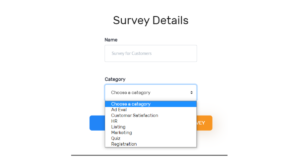
Customize Your Survey with Templates
Merren offers templates that you can customize. These templates are pre designed and pre tested to bring high response rates. The format will also be conversational in nature to solicit responses from customers. The survey questions can be easily distributed via Whatsapp surveys, Facebook messenger, dynamic AMP email or web based chat bots. In case you wish to speed up the survey creation process, we have the AI Survey Builder that can give you instant questionnaires, ready-to-go.
The Best Practices for Survey Design
A survey should be initially designed with a specific goal in mind. Decide on what the feedback forms are meant to achieve. Goal setting can define what kind of survey format a business can use. If the aim is to understand the current processes of customer experience, then customer satisfaction metrics are commonly used to gauge the audience. Here are some points to note for a good questionnaire design.
Using metrics of NPS, CSAT and CES
Customer satisfaction metrics are very commonly used for in-app surveys or after a phone call with the customer service. They are an industry standard way of measuring customer satisfaction. These include net promoter score, customer satisfaction score, and customer effort score or CES. These are closed-ended questionnaires that usually have a high response rate since they seek responses over a certain service, experience or a new product usage. Including an open-ended section under these metrics can bring nuanced answers for the ratings. Keep in mind that NPS scores are not always appropriate for sensitive questions (intimate product, sexual wellness).
Keep it jargon free and concise
A double-barreled question is very confusing to the audience. It is advised to break questions into different parts if we are looking to improve survey responses. Online surveys have to be simple in terms of language since the people who respond may not always have the cognitive encouragement to grasp terminologies. The main aim of a market research is to collect as many authentic responses from the target audience.
Consider distribution channels- messenger or emails
Social media and messenger based surveys are short, quick and should be very precise. On the other hand, emails are a great way to share newsletters, launch new product information and share detailed survey question type. Messenger based surveys are quick, conversations and capture respondent information swiftly. When we consider Whatsapp surveys, the main aim should be to keep it very brief- capture essential details without taking the time of the audience. Emails need a little bit of cognitive effort. However, one can still design a quick email survey. If we are looking at detailed data, dynamic emails are also a good medium to utilize.
Keep it goal oriented
Most surveys across industries have various aims- to identify if they can enhance the user experience across journeys, or onboarding potential customers. It is always a good idea to gauge your audience on different satisfaction metrics. When you identify the goal, you can define the length of your survey. When a framework, you can bring the responses that are required to create good marketing, customer support or pricing strategies.
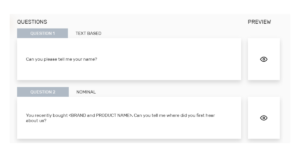
Use a mix of question types
To obtain diverse types of information, it is advisable to include a mix of question types. These may include multiple-choice options, rating scales, open-ended queries, and demographic inquiries where appropriate. This approach facilitates the collection of quantitative as well as qualitative data. This in turn provides a more comprehensive insight into the viewpoints of the respondents. One can also include an option where the customer can share multimedia – audio video, photos or just plain text. This makes data, media rich.
Order questions thoughtfully
Organize your questions in a logical and coherent flow. Start with simple and welcoming questions to engage respondents. Gradually move towards more complex or sensitive topics. Even if a marketer would require answers on sensitive topics, one can apply anonymity to ensure authentic responses. Group related questions together and use skip logic or branching to make the survey more personalized and efficient.
Offer options that cover the full range
When using rating scales or multiple-choice questions, ensure that the available response options cover the entire range of possible responses. Avoid omitting important options that respondents may want to select. Consider using “other” or “not applicable” options when necessary.
Conclusion
A good survey design will determine your response rate, compatibility across devices and clarity of questionnaires. It is primarily important that your target audience fully comprehends every question. So keep it free of abbreviations, jargons and complex technical terms. There are different ways to conduct a market research survey. In case you are not sure of where to start, build your own sample survey questions and conduct a pilot test before sharing it to a wider demographic.
If you want instant surveys and templates, sign up for a 14 day free trial. Let our AI do the cognitive heavy lifting and streamline your research efforts.

